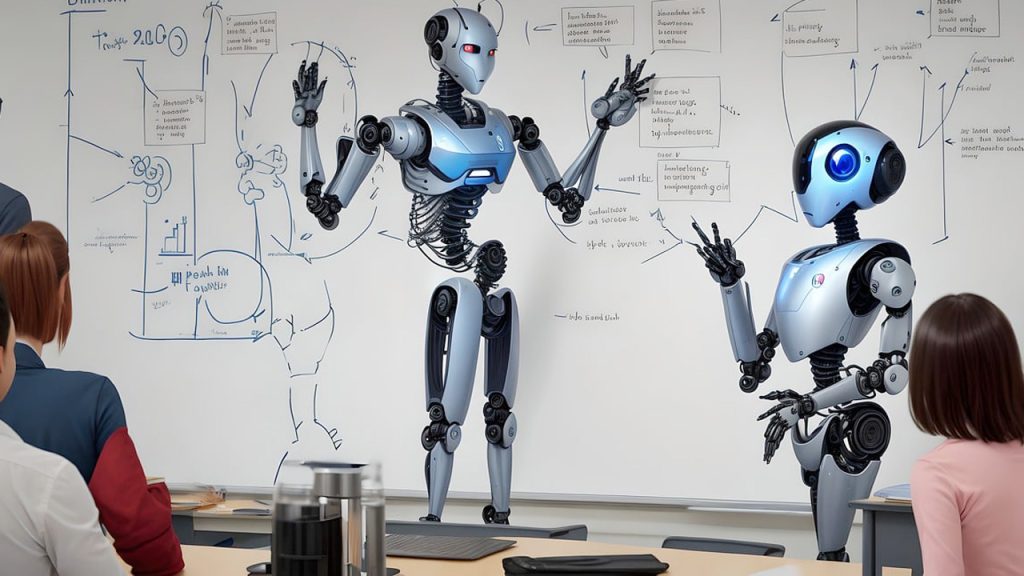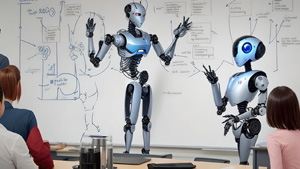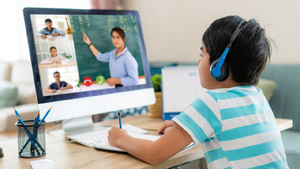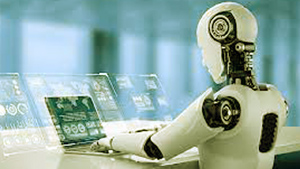In the ever-evolving landscape of education, robots have emerged as a powerful tool to enhance learning experiences. With their ability to engage and interact with students, robots are transforming classrooms and revolutionizing the way we educate the next generation. From preschools to universities, educational institutions across the globe are embracing the potential of robotic technology.

Photo by madebyfaisal, Pixabay
Benefits of using robots in education
Robots offer a wide range of applications in education, from assisting teachers in delivering content to providing personalized learning experiences for students. These intelligent machines can facilitate interactive lessons, promote problem-solving skills, and foster creativity and critical thinking. With their diverse capabilities, robots enable students to grasp complex concepts in STEM subjects and develop essential 21st-century skills.
One of the key benefits of using robots in education is their ability to engage students in a unique and interactive way. Unlike traditional teaching methods, robots can capture students’ attention and maintain their interest throughout the lesson. This enhanced engagement leads to improved retention and comprehension of the material being taught. Robots can adapt their teaching style to individual students, providing personalized instruction that caters to their specific learning needs.
Robots promote collaborative learning by encouraging students to work together in solving problems and completing tasks. By engaging in group activities, students develop important social skills such as communication, teamwork, and leadership. These skills are crucial for success in the modern workforce, where collaboration and effective communication are highly valued.
In addition to improving engagement and collaboration, robots also have the potential to support students with special needs. For students with disabilities or learning difficulties, robots can provide a safe and non-judgmental environment for practicing social skills and improving communication abilities. These technological companions can adapt their interactions to meet the unique needs of each student, providing tailored support and encouragement.
The benefits of using robots in education are vast. From increasing engagement and collaboration to providing personalized support for students with special needs, robots have the potential to revolutionize the way we teach and learn.
Types of robots used in education
There are various types of robots used in education, each with their own unique capabilities and applications. These robots can be categorized into different groups based on their functionality and purpose.
One common type of educational robot is the programmable robot. These robots can be programmed to perform specific tasks or follow a set of instructions. They often come with a visual programming interface that allows students to learn programming concepts in a hands-on and interactive way. Programmable robots are especially popular in STEM education, as they enable students to apply their knowledge of coding and algorithms to real-world scenarios.
Another type of educational robot is the humanoid robot. These robots are designed to resemble humans in appearance and behavior. They are equipped with advanced sensors and artificial intelligence algorithms that enable them to interact with students in a more human-like manner. Humanoid robots can engage in conversations, respond to questions, and even express emotions, making them ideal companions for students in language learning or social skills development.
In addition to programmable and humanoid robots, there are also specialized robots used in specific educational fields. For example, in the field of healthcare education, robots can be used to simulate medical procedures and provide hands-on training for aspiring healthcare professionals. These robots can replicate the complexities of human anatomy and physiology, allowing students to practice their skills in a realistic and controlled environment.
The types of robots used in education are constantly evolving as technology advances. From simple programmable robots to sophisticated humanoid companions, each type of robot offers unique opportunities for enhancing the learning experience.
Robotics programs in schools and universities
As the demand for robotics education continues to grow, many schools and universities have developed dedicated robotics programs. These programs aim to provide students with hands-on experience in robotics and foster their interest in STEM subjects.
At the elementary and middle school levels, robotics programs often take the form of extracurricular activities or clubs. Students have the opportunity to join robotics clubs where they can learn about robotics concepts, build and program robots, and participate in competitions. These programs not only teach students valuable skills in coding and engineering but also promote teamwork and problem-solving abilities.
In high schools, robotics programs are often integrated into the curriculum as elective courses or part of STEM-focused programs. Students can take robotics classes where they learn advanced programming techniques, design and build robots, and explore real-world applications of robotics. These programs provide a solid foundation for students interested in pursuing careers in robotics or related fields.
Universities and colleges also offer robotics programs at the undergraduate and graduate levels. These programs typically include courses in robotics engineering, artificial intelligence, and automation. Students have the opportunity to conduct research in robotics and work on cutting-edge projects that push the boundaries of robotic technology. These programs prepare students for careers in industries such as manufacturing, healthcare, and automation.
Robotics programs in schools and universities play a crucial role in nurturing students’ interest in robotics and providing them with the skills and knowledge needed to succeed in this rapidly growing field.
Robotics competitions and events
Robotics competitions and events are an integral part of the robotics education ecosystem. These events provide students with opportunities to showcase their skills, compete against their peers, and learn from experts in the field.
One of the most popular robotics competitions is the FIRST Robotics Competition (FRC). FRC is an international competition where high school students form teams and build robots to compete in a series of challenges. The competition not only tests students’ technical skills but also emphasizes teamwork, problem-solving, and innovation. FRC teams have the opportunity to work closely with industry professionals and mentors, gaining valuable insights into the world of robotics.
In addition to FRC, there are numerous other robotics competitions at various levels, catering to students of all ages and skill levels. For example, the VEX Robotics Competition is a series of competitions for elementary, middle, and high school students. The competition challenges students to design, build, and program robots to complete specific tasks. VEX competitions focus on promoting creativity, critical thinking, and collaboration among participants.
Robotics events and conferences, such as the International Conference on Robotics and Automation (ICRA) and the RoboCup, bring together researchers, educators, and industry professionals from around the world. These events provide a platform for sharing knowledge, exchanging ideas, and showcasing the latest advancements in robotics technology. Students have the opportunity to attend workshops, participate in demonstrations, and network with experts in the field.
Robotics competitions and events not only foster students’ passion for robotics but also help develop important skills such as teamwork, problem-solving, and critical thinking. These events play a crucial role in inspiring the next generation of roboticists and pushing the boundaries of robotic technology.
Role of robots in STEM education
STEM education, which stands for Science, Technology, Engineering, and Mathematics, is a key focus in many educational institutions. Robots play a significant role in promoting and enhancing STEM education by providing hands-on learning experiences and real-world applications of STEM concepts.
One of the main benefits of using robots in STEM education is their ability to make abstract concepts tangible and relatable. Robots can bring theories and principles to life by demonstrating their practical applications. For example, in physics education, robots can be used to simulate and visualize concepts such as motion, forces, and energy. This hands-on approach helps students grasp complex ideas and understand their relevance in the real world.
Robots enable students to apply their knowledge of STEM subjects in a practical and interactive manner. By programming and controlling robots, students can experiment with different variables, test hypotheses, and analyze data. This experiential learning approach not only reinforces theoretical concepts but also develops critical thinking and problem-solving skills.
Robots also play a crucial role in addressing the gender gap in STEM fields. By introducing robotics at an early age and creating inclusive learning environments, educators can encourage girls to pursue STEM-related careers. Robots provide a neutral and non-intimidating platform for girls to explore their interest in engineering, coding, and technology.
Incorporating robots into STEM education also prepares students for the future job market. As automation and robotics continue to advance, the demand for STEM skills is increasing. By familiarizing students with robotics technology and its applications, educators are equipping them with the skills and knowledge needed to thrive in the digital age.
Robots have a significant role to play in promoting STEM education by making abstract concepts tangible, providing hands-on learning experiences, and preparing students for the future workforce.
Examples of robots used in classrooms
Robots are being used in classrooms around the world to enhance teaching and learning experiences. These robots come in various shapes, sizes, and functionalities, catering to different educational needs. Here are a few examples of robots used in classrooms:
Bee-Bot
Bee-Bot is a small, programmable robot designed for early childhood education. It introduces young children to coding and sequencing concepts through a simple and intuitive interface. Bee-Bot can be programmed to move in different directions, teaching children the basics of directional language and problem-solving.
Dash and Dot
Dash and Dot are interactive robots that teach children programming and problem-solving skills. These robots can be controlled using a visual programming language and have a range of capabilities, including moving, dancing, and responding to voice commands. Dash and Dot are popular in primary schools, where they engage students in creative and hands-on learning activities.
NAO
NAO is a humanoid robot designed for educational purposes. With its advanced sensors and artificial intelligence algorithms, NAO can interact with students in a natural and human-like way. NAO can be programmed to teach a variety of subjects, from language learning to mathematics. Its expressive face and gestures make learning fun and engaging for students.
LEGO Mindstorms EV3
LEGO Mindstorms EV3 is a robotics kit that allows students to build and program their own robots. The kit includes motors, sensors, and a programmable brick that serves as the robot’s brain. Students can design and build robots to complete specific tasks, encouraging creativity, critical thinking, and problem-solving skills.
These are just a few examples of the wide range of robots used in classrooms. Each robot offers unique functionalities and benefits, catering to different educational needs and objectives. By incorporating robots into classrooms, educators are creating dynamic and engaging learning environments that inspire students to explore and learn.
Challenges and limitations of using robots in education
While the use of robots in education offers numerous benefits, there are also challenges and limitations to consider. These challenges can range from technical issues to ethical concerns. Here are some of the key challenges and limitations of using robots in education:
Cost
Robots can be expensive, especially those with advanced capabilities and functionalities. The cost of purchasing and maintaining robots can be a significant barrier for many educational institutions, particularly those with limited budgets.
Technical issues
Robots, like any other technology, can experience technical issues and malfunctions. This can disrupt the learning process and require additional resources and expertise to fix. Educators need to be prepared to troubleshoot technical problems and ensure the smooth operation of robots in the classroom.
Training and support
Integrating robots into the curriculum requires teachers to have the necessary training and support. Teachers need to be familiar with the robot’s functionalities, programming languages, and troubleshooting techniques. Ongoing professional development opportunities and technical support are crucial for successful implementation of robotics in education.
Ethical considerations
The use of robots in education raises ethical concerns, particularly in relation to privacy and data security. Robots that collect and store student data need to comply with strict privacy regulations to ensure the safety and confidentiality of students’ information. Educators and policymakers need to establish clear guidelines and protocols to address these ethical considerations.
Human interaction
While robots can engage and interact with students, they cannot fully replace human teachers. The role of teachers in education goes beyond imparting knowledge; they provide emotional support, guidance, and personalized feedback. Robots should be seen as tools to enhance teaching and learning, rather than substitutes for human educators.
It is important for educators and policymakers to address these challenges and limitations to ensure the responsible and effective use of robots in education.
Future of robots in education
The future of robots in education is promising, as technological advancements continue to push the boundaries of what robots can do. Here are some potential developments and trends that we can expect to see in the future of robotics in education:
Personalized learning
Robots have the potential to provide personalized learning experiences tailored to each student’s individual needs and learning styles. By leveraging artificial intelligence, robots can analyze data and adapt their teaching methods to optimize student engagement and learning outcomes.
Virtual reality and augmented reality integration
The integration of virtual reality (VR) and augmented reality (AR) technologies with robots can enhance the immersive and interactive nature of learning experiences. Students can explore virtual environments, interact with virtual objects, and collaborate with peers in a simulated setting.
Social and emotional learning
Robots can play a role in promoting social and emotional learning by providing students with opportunities to practice empathy, communication, and conflict resolution skills. Robots can simulate real-world scenarios and provide feedback and guidance to help students develop these important skills.
Cloud robotics
Cloud robotics enables robots to access and utilize vast amounts of data and computational power from the cloud. This allows robots to learn from collective experiences and improve their capabilities over time. Cloud robotics can enhance the intelligence and functionality of robots in education.
Collaboration between humans and robots
As robots become more advanced and capable, there will be increasing opportunities for collaboration between humans and robots in the educational setting. Robots can assist teachers in delivering content, provide real-time feedback to students, and facilitate group activities.
The future of robots in education holds immense potential for transforming the way we teach and learn. By embracing these advancements and addressing the challenges that come with them, we can create a future where robots and humans work together to create engaging and effective educational experiences.
Conclusion
Robots have become an integral part of the education landscape, revolutionizing the way we teach and learn. From interactive lessons to personalized support, robots offer a wide range of benefits for students and educators alike. By engaging students, promoting collaboration, and enhancing STEM education, robots are shaping the future of learning.
While there are challenges and limitations to consider, the potential of robots in education is limitless. As technology continues to advance, we can expect to see even more innovative applications of robotics in the classroom. By embracing these advancements and addressing the ethical and technical considerations, we can fully harness the power of robots to create dynamic and engaging learning environments for the next generation. The future of education is here, and it’s powered by robots.




